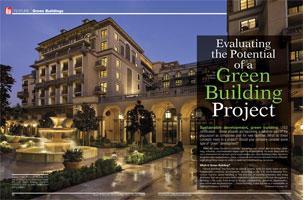
Sustainable development, green building, LEED certification….these phrases are becoming a common part of the discussion as companies plan for new facilities. What do these concepts mean to a project? Should your company consider some type of “green” development?
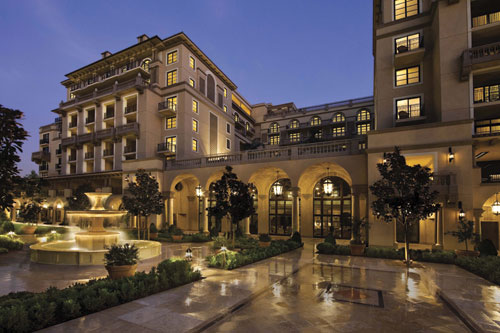
There are many factors to consider, including cost (initial and on-going), planning, schedule, environmental impact and social perception. As more states and local communities incorporate green requirements into their building codes, incentive programs and comprehensive plans, companies will need an increased level of knowledge about these issues in order to make informed building decisions.
What is Green Building?
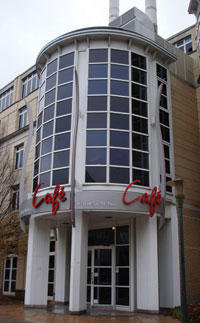 “Green building” has become an almost generic term for many types of environmentally-conscious development. According to the U.S. Environmental Protection Agency, green building is “the practice of creating structures and using processes that are environmentally responsible and resource-efficient throughout a building's life-cycle from siting to design, construction, operation, maintenance, renovation and deconstruction….Green building is also known as a sustainable or high performance building.”
“Green building” has become an almost generic term for many types of environmentally-conscious development. According to the U.S. Environmental Protection Agency, green building is “the practice of creating structures and using processes that are environmentally responsible and resource-efficient throughout a building's life-cycle from siting to design, construction, operation, maintenance, renovation and deconstruction….Green building is also known as a sustainable or high performance building.”The concept of green building is not new. Sod roofs, the precursor to modern green roofs, were used in the Middle Ages. There is evidence of reuse of scrap metals and other building materials in pre-industrial times. Indians in the American Southwest used the orientation of their buildings to collect solar heat.
The modern green building movement in the
Leadership in Energy Efficient Design (LEED)
The U.S. Green Building Council (USGBC) created the LEED certification system to bring structure to the green building industry. While numerous standards and definitions for environmentally-friendly construction have been developed all over the world, LEED has become the most widely used measure for green building in the
While LEED is the basis for this article, it is important to note that any of the elements discussed below can be incorporated into a project without seeking a LEED certification. In fact, many communities reference LEED in their building codes and incentives but accept documentation of green building elements that are not LEED certified.
The LEED system sets measurable standards for environmentally sustainable design and construction, using a point system to determine how well a building performs across a wide spectrum of environmental metrics. Based on the points awarded, a building can be certified at 4 levels – certified, silver, gold and platinum. This official recognition is awarded by the Green Building Certification Institute (GBCI), an independent, third-party organization that oversees project certification and professional accreditation. LEED can apply to most building types, including office, industrial, commercial, governmental and residential.
What Does LEED Measure?
While LEED metrics differ by project type, the objective is to recognize a positive environmental impact in the following areas:
Sustainable sites: Location and management of the site are important considerations for LEED.
Water Efficiency: Efficient water use, both indoors and outdoors, is encouraged.
Materials & Resources: Points are awarded based on the sustainability of building products, preservation of resources and reduction of waste.
Energy and Atmosphere: LEED encourages all types of energy conservation and the use of renewable energy.
Indoor Environmental Quality: Creating a clean and comfortable environment for employees is the basis of this category.
Innovation in Design: Use of new technologies and strategies can earn bonus points for a project.
Factors to Consider When Incorporating LEED in the Site Selection Process
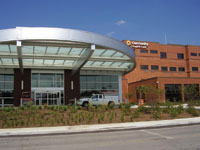 When considering LEED as part of a new facility project, planning is extremely important. The decision to pursue LEED certification needs to be made early in the process. Many initial decisions, including the location of the new facility and the basic design, will be impacted by LEED requirements. These decisions need to be fully documented as they are made to ensure that the proper points are awarded at certification. It is often very difficult
When considering LEED as part of a new facility project, planning is extremely important. The decision to pursue LEED certification needs to be made early in the process. Many initial decisions, including the location of the new facility and the basic design, will be impacted by LEED requirements. These decisions need to be fully documented as they are made to ensure that the proper points are awarded at certification. It is often very difficult For a company looking for a new location, the LEED concept favors existing buildings or infill sites over
Redevelopment of an existing building can bring many of the above advantages to the project and more. Modifications to an existing building will have little or no new negative impact on the development footprint and surrounding community. An existing building may also provide access to existing resources such as public transportation and other amenities. Relatively inexpensive changes, like reduction in night-time lighting, addition of a bike rack and designation of preferred parking for fuel efficient vehicles, can add LEED points to the project.
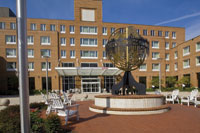 For either new construction or renovation, it may also be advantageous to consider reuse of a brownfield site or building. In addition to earning LEED points simply because the site is a brownfield, this type of development often brings the added benefit of additional incentives from federal, state and local governments. While brownfield development is complex and time-consuming, the impact on the surrounding neighborhood can be substantial. It can generate goodwill and invaluable positive publicity for a company.
For either new construction or renovation, it may also be advantageous to consider reuse of a brownfield site or building. In addition to earning LEED points simply because the site is a brownfield, this type of development often brings the added benefit of additional incentives from federal, state and local governments. While brownfield development is complex and time-consuming, the impact on the surrounding neighborhood can be substantial. It can generate goodwill and invaluable positive publicity for a company.
The selection of a site is a key factor in a project’s ability to obtain a LEED certification. The Sustainable Sites Category accounts for a significant portion of possible LEED points. These points are very difficult to earn if the site is not carefully evaluated at the front end of the project.
Design and Construction Factors
Once the location is determined, design of the facility begins. Assembling an integrated project team including the developer/owner, architect, engineer, landscape architect, contractor, and asset and property management staff is very important. Key members of the team should be LEED Accredited Professionals. This designation is achieved by passing an exam administered by the Green Building Certification Institute. Asmany of the team members as possible should have some LEED training. Hands-on experience in documenting the process and working with many of the building materials and systems is important for the success of the project. Meeting LEED standards on complex projects takes attention to detail and demands strong project management.
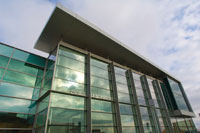 The first step in a LEED project is typically a design charette. The charette provides an opportunity for the entire team to brainstorm the best ways to achieve the desired level of LEED certification. There are trade-offs involved in the process. For example, the cost of heating and cooling may be inversely related to the increased use of windows and natural light. When making these types of decisions, it is important to analyze both initial cost, on-going operational costs and the LEED objectives achieved. This iterative review process must take place during the entire design process.
The first step in a LEED project is typically a design charette. The charette provides an opportunity for the entire team to brainstorm the best ways to achieve the desired level of LEED certification. There are trade-offs involved in the process. For example, the cost of heating and cooling may be inversely related to the increased use of windows and natural light. When making these types of decisions, it is important to analyze both initial cost, on-going operational costs and the LEED objectives achieved. This iterative review process must take place during the entire design process.
While the design process is important in every project, there are key areas that become even more important if a LEED certification is desired. The Energy and Atmosphere category has the largest number of possible points, so it is important to carefully consider decisions that impact this area. Many of the systems that earn points in this category can also be very costly, so careful analysis is required. For example, points for renewable energy generation can be earned through the use of solar panels, wind turbines, biomass and geothermal. The cost of installing these types of systems must be weighed against the efficiency and the on-going savings they provide, which can be significant.
The LEED category, Indoor Environmental Quality, is focused on the comfort and quality of work life for employees. To gain points in this area, the team must consider both building design elements and finishes. Designing the space to include ample natural light and outside views for workers can gain valuable points. Lighting, heating and cooling systems with controls that allow employees to create a comfortable environment for themselves are desired. Air quality is another important consideration. Points are gained for outdoor air delivery monitoring and increased ventilation.
The type and installation of key building finishes can also add LEED points. The use of materials that emit low levels of volatile organic compounds (VOCs) has a major impact on indoor air quality. The types of adhesives, sealants, paints and coatings used can impact LEED points earned. In addition, carpet and composite wood furniture can be chosen to minimize the emission of chemicals into the building. In some cases, these finish materials may be more expensive than standard products. In this case, the increased cost is not necessarily recouped through on-going operational costs. The project team must consider the added costs versus the potential points gained.
The Materials and Resources category focuses heavily on reuse and waste management. Points are gained for construction waste reduction and recycling as well as for the use of materials whose production has the lowest impact possible on the environment. This may include rapidly renewing resources like bamboo or products that are produced nearby to minimize shipping. The Water Efficiency category is perhaps the easiest to achieve. Adding low-flow lavatories, dual flush toilets and native or xeroscape landscaping can reduce water use.
Once the design is completed, the construction team must be able to successfully construct the facility, using the latest green technologies and materials. They must also document the process, including recycling of waste, installation of systems and materials used to ensure that the maximum points are achieved. Commissioning, which is the verification of the proper function of systems to determine compliance with design documents, is a key to LEED certification. Verification of commissioning must be submitted as part of the certification package.
Costs and Benefits to Consider
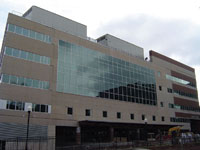 One of the biggest questions about green building is whether the benefits outweigh the costs. There is no doubt that developing a LEED-certified project is expensive. The extra time and personnel involved in the planning, design, construction and documentation process adds cost. Many of the building elements are also more expensive than traditional options. However, if these systems are chosen carefully and implemented wisely, on-going operational costs can be significantly reduced.
One of the biggest questions about green building is whether the benefits outweigh the costs. There is no doubt that developing a LEED-certified project is expensive. The extra time and personnel involved in the planning, design, construction and documentation process adds cost. Many of the building elements are also more expensive than traditional options. However, if these systems are chosen carefully and implemented wisely, on-going operational costs can be significantly reduced.More and more communities are providing incentives for green building. According to the USGBC 44 states, 186 localities and 12 federal agencies have adopted LEED policies. Incentives may include increased tax credits, higher density allowances, expedited permitting, permit fee rebates, and grants for job creation in LEED buildings. It is important to note that while many of these programs use LEED as the standard, many will also accept environmental design standards deemed equivalent to LEED. When considering a building project, an inquiry should be made to the local economic development professional regarding the availability of green building incentives. A database of state, local, utility and federal incentives that promote renewable energy and energy efficiency can be found at www.dsireusa.org.
